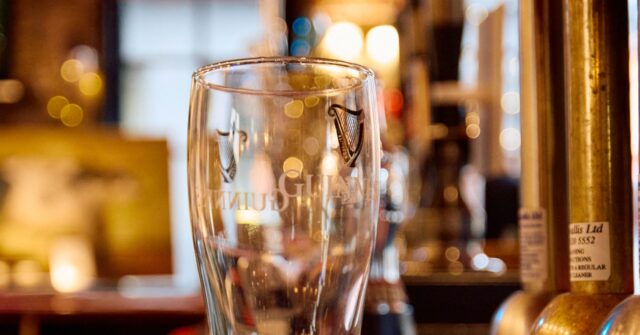Pubs and bars across the UK are currently facing a shortage of Guinness, prompting establishments to ration the iconic Irish stout in anticipation of the Christmas season. This shortage arises from a marked increase in demand for Guinness, particularly among younger demographics, including women. Reports indicate that the rise in popularity correlates with viral trends, notably the “splitting the G” phenomenon. This trend encourages drinkers to drink their pint in a way that causes the leftover beer to settle in the middle of the “G” logo on the glass, leading to a surge in consumption and, consequently, supply issues.
To manage this overwhelming demand, Diageo, the owner of the Guinness brand, announced last week that they would impose purchasing limits on pubs across England, Wales, and Scotland. This decision is a response to what Diageo describes as “exceptional consumer demand” for the stout in Great Britain. As part of this effort, some pubs have begun issuing “Guinness Ration Cards” to help manage the limited supplies, although some locations have reported running out of stock despite these measures. However, it is important to note that these restrictions do not apply to establishments in Northern Ireland or the Republic of Ireland.
Data from the food and drinks research firm CGA indicates that, despite a general decline in beer consumption across the UK from July to October, the sale of Guinness has actually increased by over 20% during this same timeframe. This trend reflects a distinct shift in consumer preferences and highlights Guinness’s resilience amidst a larger downturn in other beer categories. The growth in Guinness’s popularity is becoming a defining characteristic of the current beverage market, indicating a shift away from traditional beer selections toward brands that have proven to resonate more with modern consumer behaviors.
Interestingly, Guinness is attracting attention beyond the UK borders. In Europe, the nonalcoholic variant, Guinness 0.0, has seen its net sales double in the fiscal year of 2024, indicating a growing trend toward nonalcoholic options in the beer market. This expansion signals an awareness among consumers regarding their choices, contributing to a diversifying marketplace where traditional stouts and beer alternatives can coexist more harmoniously. Diageo’s focus on nonalcoholic offerings is reflective of a broader inclination towards mindful drinking habits among consumers.
Additionally, Diageo has noted a similar spike in Guinness’s popularity in the U.S. market, where it has emerged as the top-imported beer over the past year ending in October. This success highlights how the brand has resonated with a diverse consumer base across different international markets, framing Guinness as not just an iconic drink from Ireland, but a global phenomenon that appeals to a variety of tastes and preferences. The company’s marketing efforts targeting younger audiences play a significant role in driving the growth and trendiness associated with the stout.
In summary, the combination of innovative marketing strategies, prevailing social media trends, and emerging consumer preferences has led to a significant uptick in Guinness consumption. The current shortage serves as both a challenge and an indicator of the brand’s strong market position. Diageo’s efforts to manage supply and cultivate a diverse product range demonstrate a proactive approach to adapting to shifting market dynamics while capitalizing on the widespread enjoyment of Guinness, both within the UK and across international borders.

